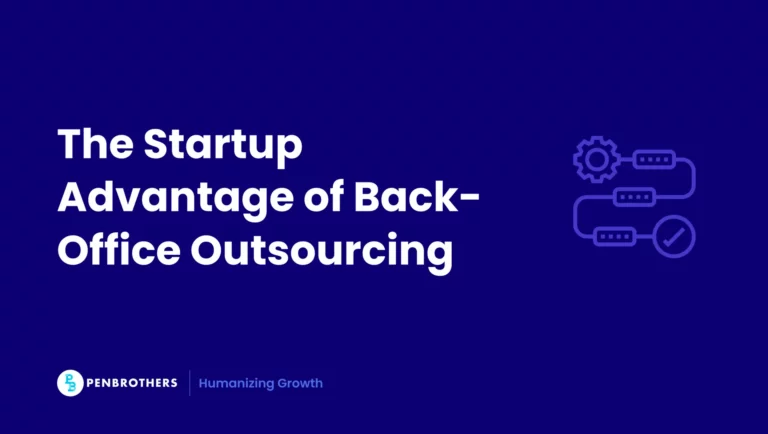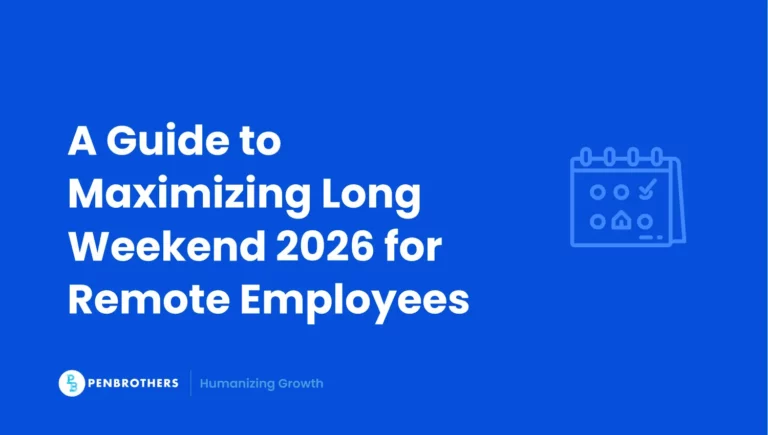You’re building something game-changing. The pitch deck is solid, users are biting, and investors want results, fast. But there’s a problem: you can’t hire engineers. Top local talent is already taken, too expensive, or eyeing Big Tech. Your roadmap stalls.
By 2030, over 85 million jobs could go unfilled due to global tech talent shortages.. Most startups treat global hiring as a backup plan. But that mindset is outdated.
Remote software engineer jobs aren’t a fallback. They’re your edge.
The Innovation Engine: Why Remote Software Engineers Are Not Just “Extra Hands”
There’s a common myth that remote engineers only handle support tasks or backlog tickets. But at startups that scale smart, remote developers play key roles in:
- Shaping architecture decisions
- Prototyping new features
- Solving edge-case bugs with creative workarounds
- Keeping continuous delivery on track
Take GitLab, for example, a fully remote company with a global engineering team. Their open-source community and distributed model didn’t slow them down; it accelerated their innovation. As they put it, remote-first work meant hiring “the best person for each role, regardless of location.”
Remote engineers are not just there to write code. They co-own the product vision.
Beyond Borders: The Startup Edge of Hiring Globally
Hiring globally isn’t a compromise. It’s a strategic decision.
Access Scarce Skills
Need Go developers, mobile app specialists, or engineers with real-world AI experience? Good luck finding them locally at short notice. The global talent pool dramatically increases your access to niche and in-demand skill sets that are often unavailable or unaffordable in your immediate market.
Speed to Hire
Time kills momentum. In the U.S., hiring a software engineer takes an average of 35 days. Offshore hiring can cut that by up to 40%, giving startups a critical speed advantage in early-stage product cycles.
Creative Problem Solving
When your team spans time zones, languages, and cultures, you get more than geographic reach, you gain cognitive diversity. Global teams approach challenges differently, leading to better solutions, faster debugging, and more innovative thinking.
Explore the most in-demand types of IT roles that startups are filling with global hires.
Time Zones Are a Feature, Not a Bug
Time zone differences are often seen as a blocker. In reality, they’re a workflow advantage, if you embrace async work.
Here’s how top startups use time zones to move faster:
- 24-Hour Development Cycles
Your LA-based team finishes their sprint and logs off while your engineers in Manila pick up the baton. Code gets written, reviewed, and shipped around the clock, not just during local business hours. - Faster QA and Bug Fixes
Offshore QA teams test builds while your core team sleeps. Bugs are documented and addressed before the next standup begins. This shortens feedback loops and accelerates time-to-release. - Fewer Bottlenecks, More Focus
Async tools like Loom, Notion, Linear, and Slack threads reduce reliance on live meetings. Developers can absorb context on their own time, respond with more thought, and maintain flow state, crucial for deep work like writing code or resolving technical debt.
This “follow-the-sun” model means faster iterations and more uninterrupted focus time for developers.
If your stack includes GitHub or GitLab, asynchronous collaboration is already baked in. Need help choosing the right dev tool? Read our comparison: GitLab vs GitHub
Autonomy Breeds Breakthroughs: Why Flexibility Fuels Performance
Micromanagement kills creativity. In contrast, autonomy builds momentum.
Remote engineers often:
- Choose their most productive hours to tackle complex problems when their minds are sharp
- Work in focused, low-distraction environments that support deep work
- Take full ownership of outcomes rather than waiting for instructions or approvals
According to a 2024 report from Owl Labs, remote workers are 47% more productive when allowed flexible schedules.
That flexibility directly impacts output, satisfaction, and retention, key concerns for any startup. When engineers are trusted to deliver rather than be present, they build better.
Cost-Effective ≠ Low-Quality: The Real ROI of Remote Devs
Let’s talk numbers.
Hiring in New York or London can run you $150K+ per engineer annually, not including office space, equipment, or overhead. But hiring equally skilled engineers from top remote markets can cut that by 60% to 70%, with zero sacrifice in quality.
This isn’t just a win for finance teams. It’s a growth lever.
- More Budget for Product Development – Redirect savings into building more features, not just covering payroll.
- Faster Team Scaling Without Burn Rate Anxiety – Add capacity without triggering another fundraising round.
- Higher Margins Without Offshoring Risk – Build globally while keeping quality high and compliance tight.
Learn more about why so many companies are outsourcing to the Philippines for engineering roles that deliver both value and velocity.
Want the numbers? Download the Salary Guide to see how much you can save by hiring remote developers in top markets like the Philippines.
Building Remote-First, Not Remote-Only: Culture, Collaboration, and Tools
A great remote engineering team isn’t just about Zoom calls and Slack channels. It’s built on:
- Documentation-First Culture
Tools like Notion, Loom, and internal wikis ensure that decisions, context, and code logic are written down, so team members across time zones can stay aligned asynchronously. - Clear Project Management Workflows
Whether it’s Jira, ClickUp, or Linear, tasks are visible, priorities are tracked, and handoffs are smooth. No more “Did we agree on that?” moments. - Engineering Rituals that Scale
Regular code reviews, virtual demos, and async retrospectives help maintain quality and alignment even when the team spans three continents. - Inclusive Practices by Default
Remote-first teams celebrate wins in public channels, accommodate time zone differences for key meetings, and actively create space for cultural differences, not just tolerate them.
Why It Matters
Culture isn’t optional, it’s the glue that holds your remote team together when things get fast, messy, or hard. And with the right foundation, remote teams can feel just as tight-knit, mission-driven, and effective as co-located ones.
Want to scale a distributed team without juggling HR, compliance, or collaboration challenges?
See how US tech firms outsource IT support while keeping culture and quality high with fully managed offshore teams.
Common Missteps Startups Make (And How to Avoid Them)
Even the smartest startups make preventable mistakes when building remote engineering teams. Moving fast doesn’t mean skipping the foundations and overlooking them can cost you time, talent, and trust.
Here are four of the most common pitfalls and how to avoid them:
| Mistake | Fix |
| Rushed Hiring | Don’t just fill seats, vet for both technical skills and soft skills like ownership, async communication, and adaptability. A great coder who can’t collaborate remotely will slow the team down. |
| Vague Onboarding | New hires need more than a welcome call. Create async onboarding decks, clear role expectations, and assign onboarding buddies to set remote devs up for success from day one. |
| Micromanagement | Hovering kills motivation. Instead, align on outcomes, not hours. Trust your team to work independently and check in on progress, not presence. |
| Ignoring Time Zone Impact | Expecting everyone to be online at the same time kills flexibility. Design around async-first workflows where collaboration happens in shared tools, not just meetings. |
Remote success is less about tools and more about systems.
Remote Software Engineer Jobs: What Startups Should Look For
If you’re hiring for remote software engineer jobs, get these right:
1. Job Description Clarity
Don’t just post a tech stack and a title. Be explicit about:
- Your development environment and preferred tools (e.g., React + Node, GitHub, Docker)
- Time zone expectations or overlap requirements
- Delivery cadence (sprints, continuous deployment, etc.)
- Communication norms (sync vs async, standups, demos)
Clarity up front helps filter out poor fits and attracts engineers who can hit the ground running.
2. Soft Skills Matter More Remotely
In a remote setting, your best engineers aren’t just great at code, they’re great at:
- Written and asynchronous communication
- Proactive problem-solving
- Owning outcomes, not just tickets
These soft skills often determine whether a remote hire elevates or derails your team. Look for examples in their past work, client feedback, or how they approach technical conversations during interviews.
3. Screening for More Than Syntax
Skip the whiteboard. Instead, assess real-world capability with:
- Take-home tasks that simulate your actual work
- Async code reviews to test collaboration skills
- Live debugging sessions to evaluate problem-solving under pressure
The goal isn’t to trick candidates, it’s to simulate how they’d actually work with your team.
4. Retention Starts on Day One
Remote developers don’t just want a gig, they want a career path. And the best ones won’t stick around if there’s no plan for growth.
Set your team up for long-term success by offering:
- Clear performance goals and feedback loops
- Mentorship or peer pairing opportunities
- Visibility into how their work contributes to the product vision
Remote developers don’t just want a gig, they want a team they can grow with.
Final Thoughts
Remote software engineers aren’t your backup plan. They’re your scaling strategy.
In a world where speed, innovation, and execution define startup survival, building globally distributed teams is no longer optional, it’s essential.
Ready to tap into a world-class network of offshore engineers in the Philippines and beyond?
Talk to Penbrothers and start hiring remote software engineers who drive real innovation.






